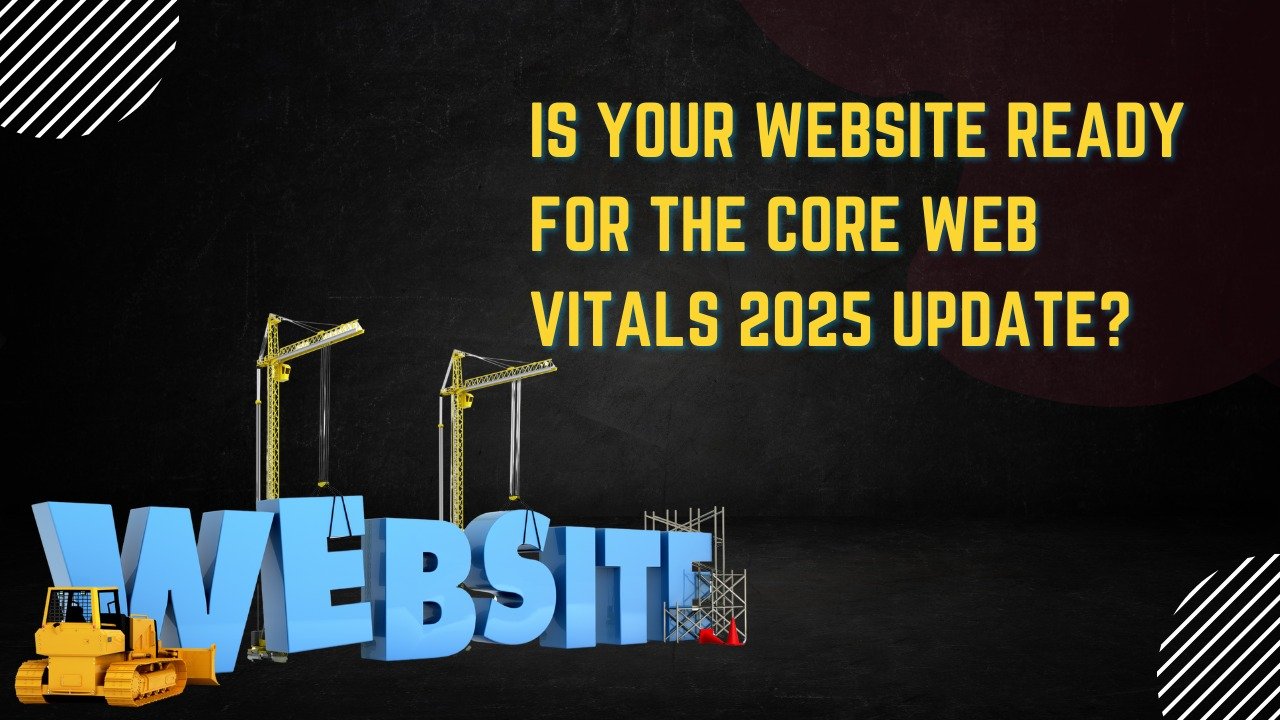Is Your Website Ready for the Core Web Vitals 2025 Update?

Let’s be honest. The world of SEO can feel like a never-ending game of catch-up. Just when you think you’ve got a handle on the rules, Google changes them. It’s enough to make any business owner or marketer want to throw their hands up in the air.
But what if we told you the next big update isn’t something to fear, but a huge opportunity? An opportunity to not only rank higher but to create a better, faster, and more enjoyable experience for every single person who visits your website.
That’s exactly what the upcoming Core Web Vitals 2025 update is all about.
You might remember the initial rollout a few years back. Well, consider that a gentle warm-up. The 2025 update is expected to refine the metrics further and, more importantly, increase their weight as a ranking factor. If your website isn’t optimized, you could be leaving valuable traffic and customers on the table.
Don’t wait until you see a drop in your search rankings. This is your early warning system and your definitive guide to getting ahead. Let’s break down what you need to know and exactly what you need to do.
What Are Core Web Vitals? (The Quick Refresher)
In simple terms, Core Web Vitals are a set of metrics Google uses to measure real-world user experience on your website. They answer three critical questions:
- How fast does the content load? (Loading Performance)
- How quickly does the website respond to user input? (Interactivity)
- How stable is the content as it loads? (Visual Stability)
Think of it like visiting a physical store. You want the doors to open quickly (loading), the staff to respond immediately when you ask a question (interactivity), and you don’t want products falling off the shelves as you walk down the aisle (visual stability). Google is now grading your digital storefront on these exact same principles.
The 2025 Shift: What’s New and Why It Matters
While the core three metrics remain the same, the emphasis is evolving. The 2025 update is expected to:
- Increase Ranking Importance: Core Web Vitals will likely become a more significant tie-breaker between two otherwise equal pages. A faster, more user-friendly website will get the boost.
- Focus on Real-World Mobile Experience: With mobile-first indexing being the standard, your mobile website performance is no longer an afterthought—it’s the primary benchmark.
- Refine Metric Thresholds: Google is constantly learning. The “good” and “needs improvement” thresholds may become more stringent, reflecting user expectations for even faster experiences.
Ignoring this isn’t just an SEO issue. A slow website frustrates users, increases your bounce rate, and directly hurts your conversion rates. Optimizing for Core Web Vitals is, therefore, one of the most direct investments you can make in both your visibility and your revenue.
Your Actionable Core Web Vitals 2025 Checklist
Ready to roll up your sleeves? Here’s your step-by-step plan to ensure your website is not just ready, but primed to dominate.
Step 1: Run a Comprehensive Audit (Know Your Enemy)
You can’t fix what you don’t measure. Start by using Google’s own free tools to get a baseline.
- Google PageSpeed Insights: This is your go-to tool. Paste your URL, and it will give you scores for both mobile and desktop, along with specific recommendations for improvement. Don’t just look at the overall score; dig into the Core Web Vitals section.
- Google Search Console: The Core Web Vitals report here shows how your actual pages are performing in the real world, grouping URLs by their status (Good, Needs Improvement, Poor). This is gold for prioritizing your efforts.
- Actionable Tip: Start with your most important landing pages—your homepage, key service pages, and top product pages.
Step 2: Tackle the Three Core Metrics
1. LCP (Largest Contentful Paint) – “Load Speed”
The Goal: 2.5 seconds or faster.
LCP measures how long it takes for the largest, most meaningful piece of content on the screen (like a hero image or a heading) to load.
How to Improve LCP:
- Optimize Your Images: This is the biggest culprit. Compress and resize images. Use modern formats like WebP. Consider using a Content Delivery Network (CDN) to serve images faster.
- Upgrade Your Hosting: Cheap, shared hosting can be a major bottleneck. Investing in a quality hosting provider is one of the most impactful changes you can make for your website’s speed.
- Leverage Browser Caching: This instructs a visitor’s browser to store certain resources locally, so they don’t have to be re-downloaded on subsequent visits.
2. FID (First Input Delay) – “Responsiveness”
The Goal: Less than 100 milliseconds.
FID measures the time from when a user first interacts with your page (clicks a link, taps a button) to when the browser actually responds to that interaction.
How to Improve FID:
- Break Up Long Tasks: Reduce and break up complex JavaScript that can “block” the main thread. Defer non-critical JavaScript.
- Minimize Main Thread Work: Simplify your code and reduce the complexity of style and layout calculations.
- Optimize Your Third-Party Code: Every analytics script, chat widget, and social media plugin adds weight. Audit them and remove what you don’t absolutely need.
3. CLS (Cumulative Layout Shift) – “Visual Stability”
The Goal: Less than 0.1.
CLS measures the unexpected movement of page content. You know when you go to click a button and an image loads, shoving the button down the page? That’s a poor CLS score.
How to Improve CLS:
- Always Include Size Attributes: For images and videos, always specify width and height dimensions in your HTML. This reserves the space before the asset loads.
- Don’t Insert Content Above Existing Content: Avoid adding banners, ads, or other elements above content that has already loaded.
- Use Web Fonts Wisely: Ensure text remains visible during webfont load by using font-display: swap in your CSS, but be aware this can cause a minor layout shift. The key is to preload critical webfonts.
Step 3: Adopt a Culture of Continuous Monitoring
Website performance isn’t a “set it and forget it” task. As you add new content, plugins, or features, your scores can change.
- Set up monthly audits using PageSpeed Insights.
- Monitor your website’s uptime and performance with tools like GTmetrix (external link) or Pingdom (external link).
- Make performance a key agenda item in your content and development meetings.
The Bottom Line: This is About More Than Just Google
While the initial driver for looking at Core Web Vitals might be SEO, the ultimate beneficiary is your user. A fast, responsive, and stable website builds trust, keeps people engaged, and directly contributes to your business goals.
If this feels overwhelming, you’re not alone. Technical SEO and website performance optimization require a specific skill set. This is where a expert partner can make all the difference.
The team at ARSL specializes in building and optimizing websites that are not only beautiful but also technically superior and lightning-fast. We can conduct a full website audit and handle the complex optimizations for you, ensuring you’re more than ready for the 2025 update.



